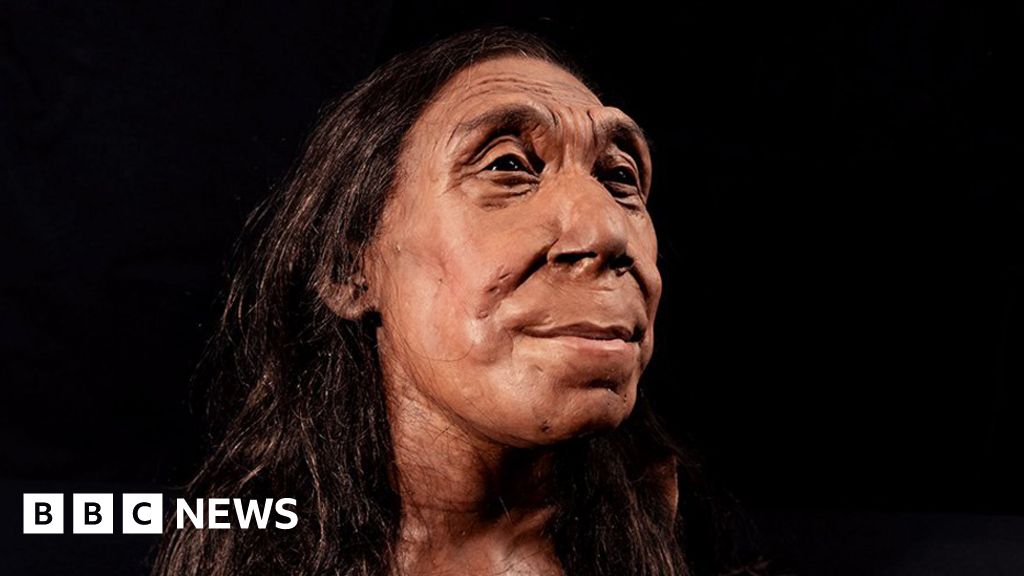British archaeologists have Revealed the reconstructed face of Shanidar Z, a 75,000-year-old Neanderthal woman. Discovered in Shanidar Cave in Iraqi Kurdistan in 2018, Shanidar Z’s skull, flattened to a two centimeters thick.

Also Read: South Africa Marks 30 Years of Democracy Since the End of Apartheid
Shanidar Z’s skull was discovered in 2018 in Iraqi Kurdistan within the Shanidar Cave. The find is as it challenges previous perceptions of Neanderthals as brutish and unsophisticated.
The skull was found flattened to a thickness of two centimeters likely due to a rockfall shortly after death. Archaeologists pieced together over 200 fragments of the skull, using micro-CT scans and manual work.
Lead conservator Dr. Lucía López-Polín played a role in stabilizing the fragile bone fragments. The reconstructed skull was then surface-scanned and 3D-printed for further analysis and reconstruction.
Shanidar Z was likely a female Neanderthal in her mid-40s considered old age in prehistory. Her stature, estimated at around five feet tall, and certain dental characteristics suggest her sex and age.
Despite the differences in skull morphology between Neanderthals and modern humans the facial reconstruction suggests a less pronounced distinction in appearance.
The discovery of Shanidar Z challenges the notion of Neanderthals as primitive revealing evidence of compassion and social organization.
The positioning of Shanidar Z’s remains within the cave alongside other Neanderthals suggests a form of ritualistic burial or ceremonial behavior.
The presence of pollen near the remains, initially interpreted as evidence of flower burials is now believed to be the result of natural processes such as bee activity or the placement of flowering branches.
The reconstruction of Shanidar Z’s face involved collaboration between archaeologists, conservators, and paleoartists.
World-leading paleoartists Adrie and Alfons Kennis recreated the facial features of Shanidar Z based on the reconstructed skull.
The project is featured in the Netflix documentary “Secrets of the Neanderthals,” produced by the BBC Studios Science Unit.
The excavation of Shanidar Cave by a UK team led to the discovery of Shanidar Z’s remains including her upper body, spine, shoulders, arms, and hands.
Also Read: Lost Gustav Klimt Painting Sells for €30 Million at Auction
The efforts of archaeologists and conservators led to the reconstruction of over 200 skull fragments. Using advanced techniques including micro-CT scans and 3D printing, the skull was restored to its original form. This reconstruction undertaken by paleoartists Adrie and Alfons Kennis.
Shanidar Z’s identity as a female Neanderthal was determined through the sequencing of tooth enamel proteins.
Analysis of her teeth indicated a lifespan of approximately mid-40s considered old age in prehistoric times.
Standing at around five feet tall, Shanidar Z possessed some of the smallest adult arm bones in the Neanderthal fossil record.
While Neanderthal skulls exhibit distinct features such as brow ridges and lack of chins, the recreated face suggests a closer resemblance to modern humans. This similarity questions about interbreeding between Neanderthals and Homo sapiens.
Evidence of pollen found with the remains initially sparked theories of flower burials, indicative of symbolic behavior or ritualistic practices.
Recent research suggests alternative explanations, such as pollen deposition by burrowing bees. The reconstruction of Shanidar Z’s face is the result of efforts between archaeologists, conservators, and paleoartists.
This approach combining archaeological excavation with technology and artistic interpretation has enabled a deeper understanding of our evolutionary relatives.
The culmination of this research is showcased in the Netflix documentary “Secrets of the Neanderthals,” produced by the BBC Studios Science Unit.
Also Read: 3,400-Year-Old Stolen Statue of King Ramses II Returns to Egypt























